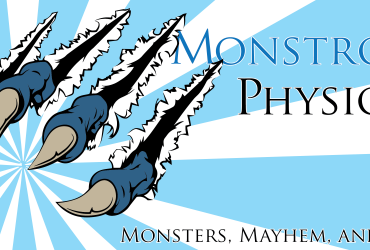Welcome to Guidance, Private Sanctuary’s source for tips and techniques for the Pathfinder Roleplaying Game, written by Everyman Gamer Alexander Augunas. Today, we’re going to be talking about Alex’s system for balancing race power levels.
Hello and welcome to Guidance!
We’re almost 10 years into the Pathfinder Roleplaying Game now, and we have a LOT of different races in the game. Everyone wants to play something cool and unique, something fun and different, something that speaks to them. But not all races are created equal, and while I like my players to be able to pick what they want to play, I don’t like the prospect of everyone choosing ridiculously powerful races like androids or ghorans just because they’re available.
After all, I may be a roleplayer, but I’m also one of the crunchiest designers that Paizo has. I know how some people play this game, and a some of those people are in my gaming groups.
So, how do you balance a bunch of fundamentally different races against one another? Well friends, believe it or not there’s a way to do this.
By the Rules—RP Add-Ons
If we’re going by the rulebooks (specifically the Advanced Race Guide), then the option provided is the race point (rp) system, which gives races an arbitrary number of “points” to spend on new abilities and bonuses. Personally, while I use the system to comparatively balance my races and alternate racial traits against a system that Paizo approves of, I don’t like the system as a means of balancing races. First, there’s no baseline in this system; there are rp ranges, sure, but different races have different amounts of rp. Humans have 10. Kobolds have 6. Elves have 11. Drow have 26. There is no good baseline to tweak, so to speak.
Furthermore, giving PCs points can vary drastically in power, from gaining a bunch of bonuses on different skills that stack with everything, to gaining ability score boosts, to gaining feats. Way too much variance in power there for this to be useful, in my opinion. So how do we make this work?
Simple. We add something new and fiddle with that.
Alex’s Method — Character Trait Scaling
The problem with messing with race points is that there isn’t a great balance between what a race point can purchase for you, so instead we need to use a system that is decently balanced within itself as our “knob” to adjust. For my games, I’ve chosen the Character Trait system.
I think its save to say by this point that you know what character traits are. They represent background elements of your character and are balanced around being roughly as good as half a feat in power. They were introduced in the Rise of the Runelords Player’s Guide and have been expanded in a few places since, most noticeably in the Advanced Player’s Guide and Ultimate Campaign.
According to the rules, you get two character traits at first level. This is the absolute perfect knob to adjust, because the game doesn’t assume you “get” any traits. Its simply a choice that you as GM get to make. With this in mind, when I start a campaign I devise four lists of character races and divide them into tiers based upon how well I think they’ll fit into my campaign world. The tiers I use are listed below.
Tierless: These races either have no place in my campaign world, or I have deemed them to be too powerful to be Player Characters.
- Tier 1: I am trying to actively encourage my players to play these races, usually because they’re abundant in the campaign world and make sense for PCs as a result, or because they’re well-balanced or low powered.
- Tier 2: I am cool with my players playing these races, but they’re uncommon in my world or they’re a little more powerful than useful.
- Tier 3: I’m a little apprehensive about players playing these races, either because they’re rare in my campaign world or they’re extremely powerful.
Once I have these categories put together, I comb through every race in the Pathfinder Roleplaying Game (plus my own list of homebrew races, if I am doing a homebrew) and organize them into these lists. When I used this method for my Jade Regent players (which we’ll hopefully get to start in six or seven months, or whenever we finish Reign of Winter), my lists looked like this:
- Tierless: Drow (3), Deurgar (3), Goblin (1), Hobgoblin (2), Human (Azlanti) (3), Kasatha (3), Kobold (1), Merfolk (0), Monkey Goblin (1), Noble Drow (0), Orc (2), Svirfneblin (3), Strix (2), Syrinex (3), Triaxian (1), Trox (0)
- Tier 1: Catfolk, Changeling, Dhampir (Inner Sea Races only)*, Dwarf, Elf, Gillman, Grippli, Gnome, Half-Elf, Half-Orc, Halfling, Human (except Azlanti)*, Ifrit, Kitsune, Nagaji, Oread, Ratfolk, Samsaran, Sylph, Tengu, Undine, Vanara, Wayang
- Tier 2: Aasimar (Inner Sea Races only)*, Aquatic Elves, Fetchlings, Lashunta, Skinwalker (Inner Sea Races only)*, Suli, Tiefling (Inner Sea Races only)*, Vishkanya
- Tier 3: Android, Gathlain, Ghoran, Wyrwood, Wyvaran
So, let me explain what this list means.
- All characters need to pick a campaign trait for their character. This is not optional. Since this is Jade Regent, the traits are listed n the Jade Regent Player’s Guide. For home games, I’d make campaign traits (probably six) and let my players pick from them.
- Tier determines the number of Character Traits your character gets, including the mandatory campaign trait. If your race is Tier 1, you get 3 traits (two of your choice, plus one campaign trait). If your race is Tier 2, you get 2 traits (one of your choice, plus one campaign trait). If your race is Tier 3, you get 1 trait (one campaign trait).
- Tierless races are not available without GM consideration. Specifically, this usually means that you need a REALLY good backstory to explain why your character is in the campaign. For evil races, this backstory needs to include a description of why your character can or will work with the people in the party—I don’t want irreconcilable infighting between players at my table. If I allow your character, the race’s effective tier is noted next to its name (1 for Tier 1, 2 for Tier 2, and so on). Races on the Tierless List with a 0 next to their name will never be permitted as a PC, so don’t bother writing the character.
Putting the List Together
I admit, I use a lot of my design brain when putting this list together. First, I went to the Advanced Race Guide and used their standard/advanced/monstrous race system to determine the basics for Tier 1, Tier 2, and Tier 3. Then I looked at the list and thought to myself, “Do any of these races make any others obsolete?” The answer was ‘Yes’ for things like the orc (WAY better than the half-orc at being a martial character) and the Azlanti human. Races that completely invalidated others were moved to the Tierless section and given effective Tiers that I felt were fair for how much better they were then their “other” race. For instance, orc has downsides that the half orc doesn’t have, so I made it effective Tier 2, whereas the Azlanti is just human, but better, so I made it Tier 3.
Then, I looked at each race and decided how likely someone from that race would be in my campaign. Aliens didn’t see likely, so I pulled them and made them Tierless. Other then aliens, though, I am pretty lenient. (And some aliens are even available for play, like the lashunta.) More importantly, I pulled some of the crazier races, like drow and svirfneblin, as well as a lot of the axe crazy races, such as goblins and kobolds, and put them on the tierless list.
Final Thoughts
When I used this system, I mostly got weird races. Plenty of people were more than willing to take a one-trait hit to get to play something that they wouldn’t normally be able to in Society Play, and I’m fine with that. One thing I will say is that the group got a little, “Off” in the sense that backstories, when they existed, weren’t always well tied into the Jade Regent storyline. As JR comes closer, I might require that a bit more.
I know that there is a big draw among GMs for the players to play characters that feel appropriate to the game. I’ve definitely felt that in preparing for Jade Regent, and it can be frustrating to learn that players want to play weird things. But I firmly believe that the PC’s only real means with which to experience the game world is through their PC, and as a result that character should get to be something that the player is happy with. Something that “fits” her needs while also being tied into the story. I’ve been in games where my GM took a weird race I wanted to play and wove it so perfectly into the story that it felt like the GM wanted me to play what I wanted all along. Because when you think about it, he did. He respected my wants and worked to make the game something I would enjoy. That’s what we should all strive for, and I hope this system lets GMs do that without feeling like their players are only ever picking the most optimized choice. After all, having fun is the most important part of the game.
Alexander “Alex” Augunas has been playing roleplaying games since 2007, which isn’t nearly as long as 90% of his colleagues. Alexander is an active freelancer for the Pathfinder Roleplaying Game and is best known as the author of the Pact Magic Unbound series by Radiance House. Alex is the owner of Everyman Gaming, LLC and is often stylized as the Everyman Gamer in honor of Guidance’s original home. Alex also cohosts the Private Sanctuary Podcast, along with fellow blogger Anthony Li, and you can follow their exploits on Facebook in the 3.5 Private Sanctuary Group, or on Alex’s Twitter, @AlJAug.







I like this.
A lot.
Thanks!